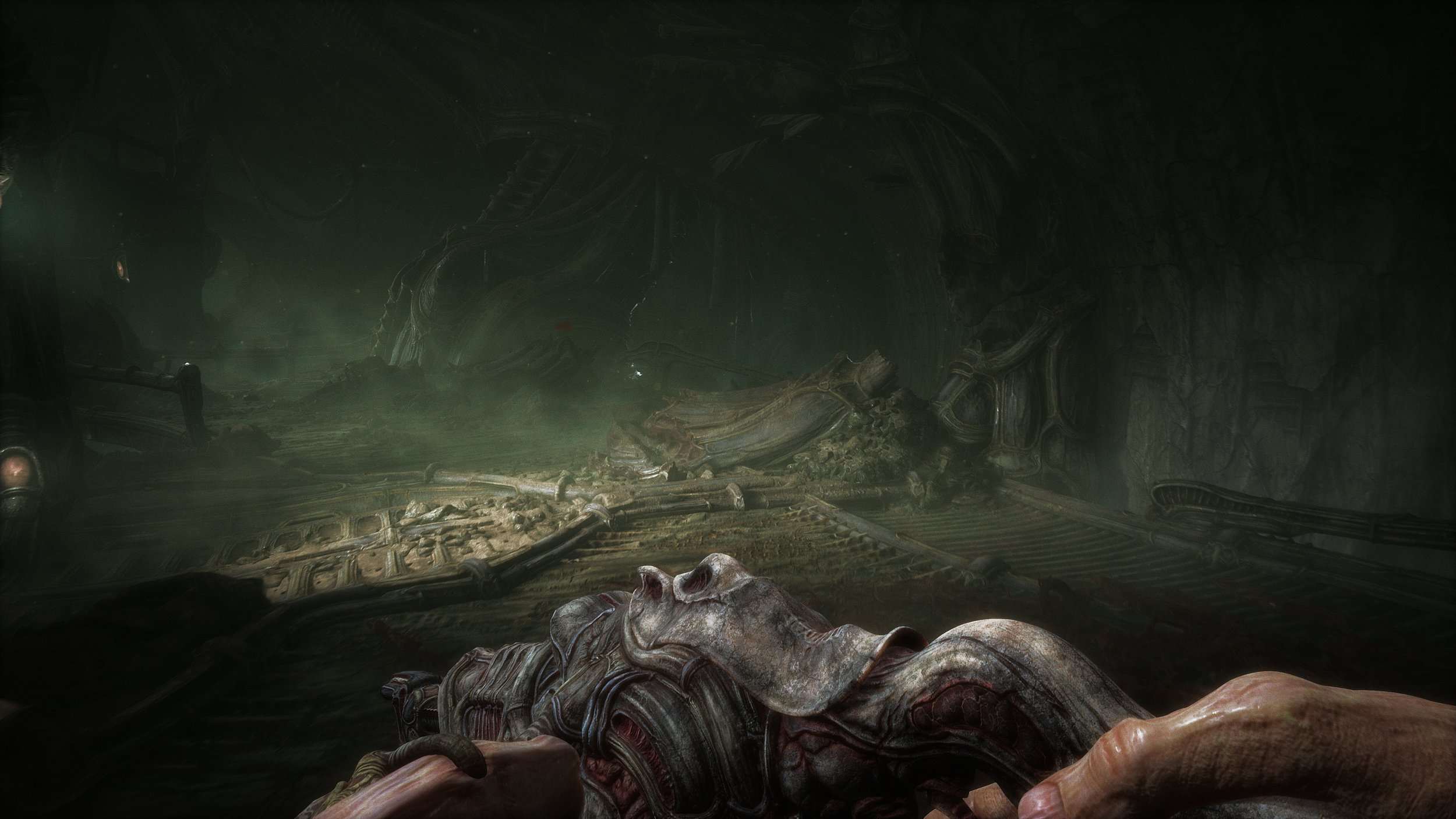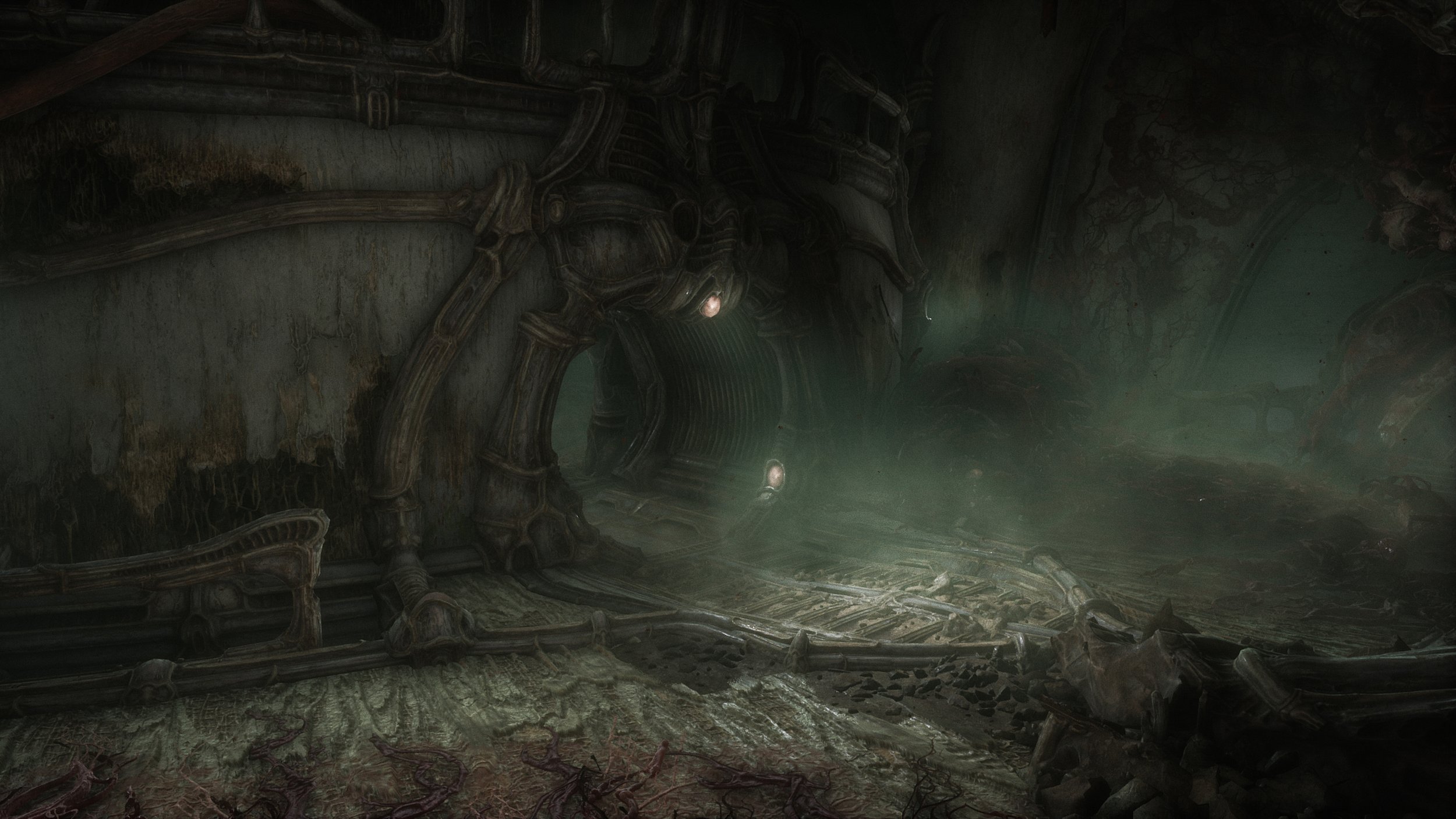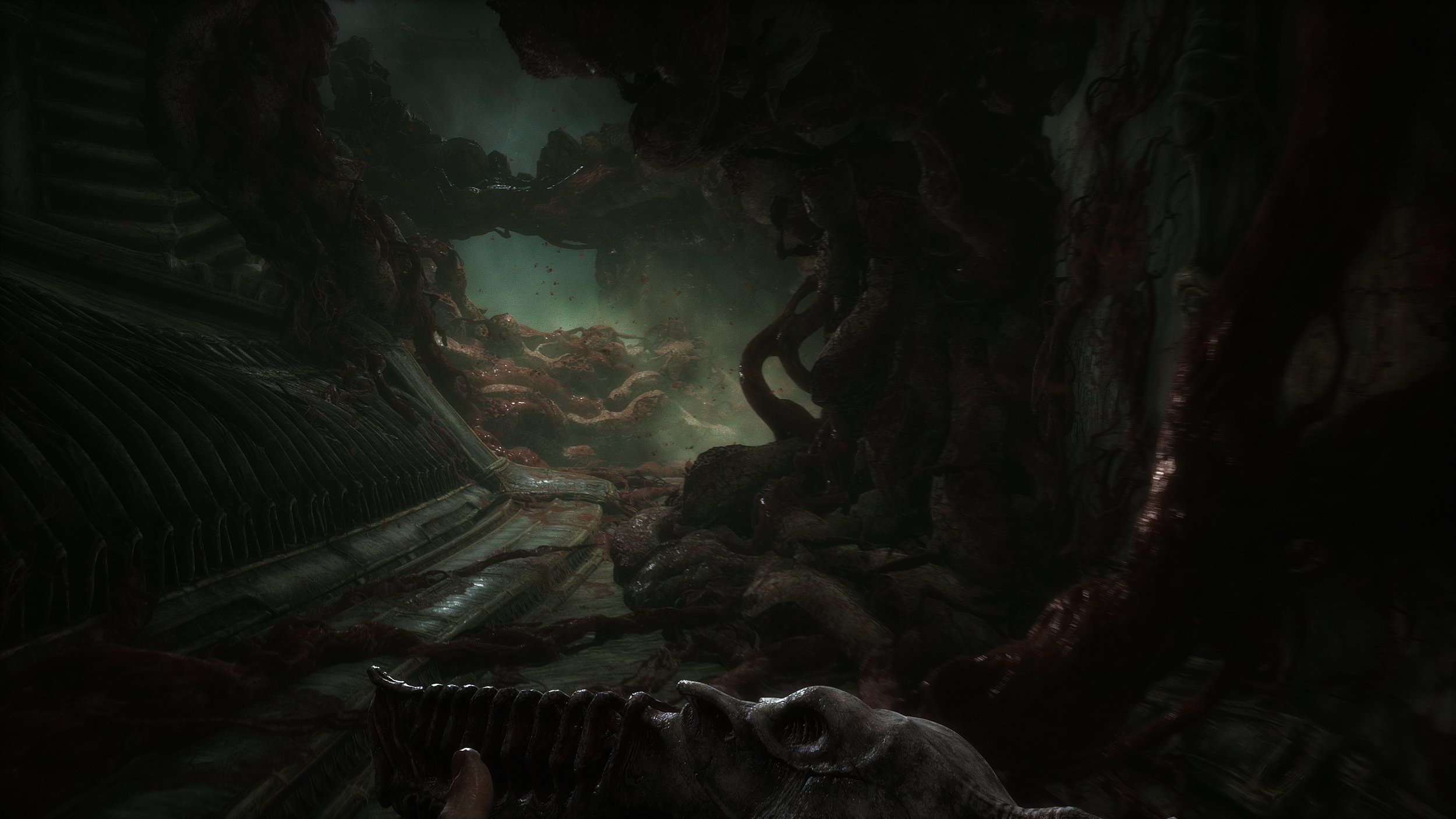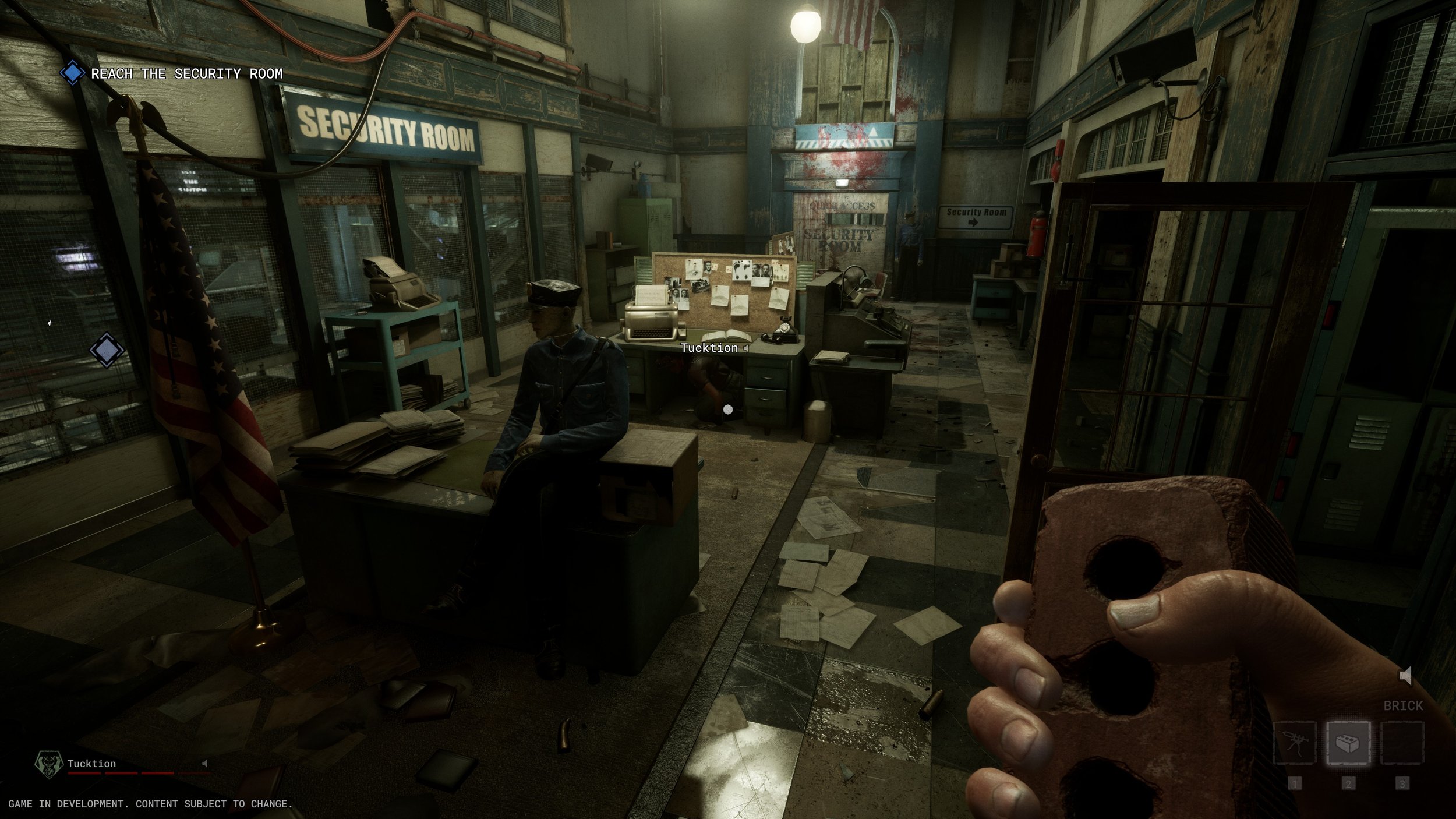Scorn (PC Game Pass) Review
A Shortened Body Horror FPS
In the 21st century, gamers have witnessed the highs and lows of playing their most anticipated games after years of waiting and speculation. Scorn is one of those games, having been originally announced in 2014. Many had high hopes for how this FPS horror setting would fare within its own shadow of expectation. In my estimated 6.5 hours of playtime, I was left a little perplexed and intrigued. Scorn impressed me with its weapon and level design, its occasional horror elements, and its atmosphere, but certain technical glitches and a lack of any narrative direction kept this from being a knockout hit for me.
Scorn began as a Kickstarter project announced by developer Ebb Software, a company based out of Serbia. Over the course of almost 10 years and two fundraising projects, the game received enough funding and hype to finish and release on PC platforms and as a console-exclusive Xbox title available on Game Pass. Scorn is Ebb’s first release since its founding in 2013. Ebb’s mission statement on their site states their intention to create “a different breed of video games.”
With Scorn, the company definitely seemed to achieve this.
Environments resemble a sort of Alien franchise setting
It is, quite frankly, somewhat difficult to describe the story of Scorn. Players awaken as a sort of humanoid being on what I assume to be a desolate planet or other location and begin wandering through dark hallways and rooms trying to find some escape from this enclosed alien-like setting. Scorn seems to have two major aspects to its gameplay: occasional combat with a limited set of weapons, and puzzle aspects to get from one location to the next. Ebb Software lets the environment do all of the storytelling, exposing players to a variety of different environments that tell an eerie, indiscernible tale of the world the player is experiencing.
Fans of the work of H.R. Giger, the artist responsible for the designs of the Alien franchise, will feel right at home here as many of the level designs are inspired by his concepts and artwork. Hallways and rooms are covered in dark, pipe-like biomaterial. Any instance where the player can see the outside shows a foggy desolate landscape occasionally interrupted by towering Gothic-like structures. The enemies that I encountered all shared an animalistic quality with less of a distinguishable form to them.
Without any sort of map system, I occasionally would get lost in the various tunnels and similar-looking rooms, but luckily the level design was compact enough to keep me from running in circles for too long before finding my way out. Besides the glaring individuality of the environment design, everything else felt minimal, including the audio. At no time did I ever feel overwhelmed by what I was seeing or hearing.
Puzzles include upgrading keys and manipulating objects
I’m always impressed with games that create unique weapon and inventory designs, and Scorn surprised me with its creativity in this area. Though the player only carries a few weapons in total, both the weapon layout and its reload animations impressed me. The inventory system also showed innovation, with a practical approach to how ammo and items are stored. I love a good practical layout for items (like in Outlast 2 where players stored bandages in one pocket and batteries in the other and can be viewed at any time) and Scorn definitely checked that box for me.
As I previously mentioned, there is no hint of actual narrative dialogue or documents anywhere in this game. The game’s official presskit page details that every level “contains its own theme… puzzles and characters that are integral in creating a cohesive world.” However, I felt as if the developers overestimated how detailed their level design was in terms of telling this story. At some points, I could look around and get a basic idea of the immediate purpose of the space I was exploring, but overall I still felt lost as to what was actually happening. The experience in Scorn reminded me of a dream that rationally cannot exist in any world but still shows up anyways. Admittedly, this game can be defined as one of subjective storytelling, relying on players to draw their own conclusions about the world, the description of their character, and the plot of the title. So, perhaps I just was not interpreting what my eyes were seeing into any sort of plot, and that’s not something I’d harshly fault Ebb Software for.
Though they were infrequent, I did encounter some technical barriers that definitely brought me out of the experience. While the guns the player acquires are pretty interesting to play with, the hitbox area for these weapons is a bit hard to pinpoint. Several times I was sure I’d hit an enemy only to be left with no indication that my shot connected at all. In a game where ammo is always scarce, missing one shot can sometimes be the difference between life and death, and unnecessarily missing due to an unreliable shot/hit system was a little frustrating.
The other, more glaring issue, involved the interact mechanic. It would just stop working. Now, this would not have been as big an issue if the player could move around freely. However, my interactions would not register when attempting to do things such as getting on an elevator platform or activating a gate which were essential activities to progress. On the handful of times this happened, I had to close and restart the game, and this seemed to fix that particular instance, and luckily this did not happen very often.
I definitely was not expecting this game to be as short as it was. Perhaps I have grown accustomed to longer games lately, but I was expecting a first-person horror experience to be at least 10 hours or longer. However, I was able to finish this in under 7 hours, and that was with me exploring every hallway and corner that I could. What probably took me the longest to complete during my playthrough were the puzzles. Despite how frustrated I became during a couple of them, I applaud Ebb Software for making these difficult. I had started playing this game with no prior knowledge of mechanics or gameplay previews, so I did not know that the game included puzzle elements. A lot of these challenges were spatial in nature, meaning the player has to manipulate objects to achieve a solution. (Confession: I’m not great at these types of puzzles.) Though I struggled at times, I can respect their inclusion and purpose within the gameplay and found them to be clever in design.
Overall, Scorn gave me a unique experience in a game. I stayed captivated not only by its world but also by the items and weapons I collected during my time with it. Though there were times I felt lost or confused about what was happening, the gameplay kept a solid forward momentum for me. Besides the aforementioned bugs, the visuals and gameplay were fairly smooth. In terms of price, I would highly recommend downloading via Game Pass first, unless you specifically want to buy from a PC platform. Scorn is a singular experience that may not offer much replay value but is a pretty satisfying title.
SCORES
GAMEPLAY - 7/10
VISUALS - 8/10
SOUND - 8/10
CONTROLS - 7.5/10
REPLAY VALUE - 6/10
OVERALL - 7.3/10
Scorn is available on PC platforms as well as Xbox Series X|S via Game Pass. Screenshots used are a combination of this reviewer’s captures as well as press shots.









Take on shadow operations and uncover the dark secrets of the Horizon Corporation in Trepang2, an unforgettable action horror first-person shooter.